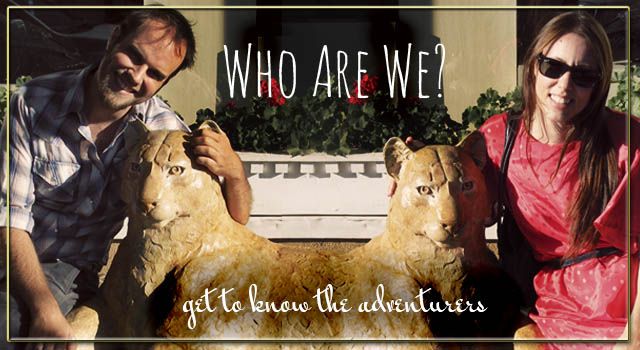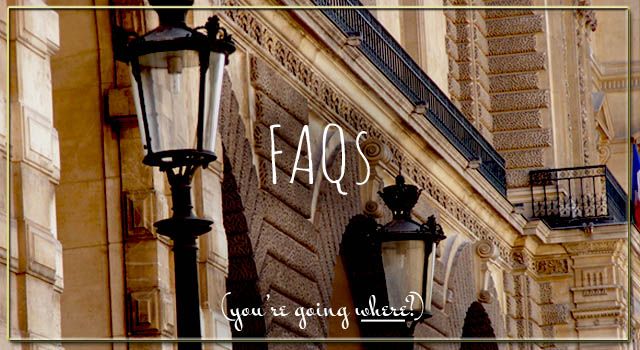From Xi'an we headed to a place Andrew had been excited about going since we decided we were going to China, the Wudang Mountains. They are one of the sacred Taoist mountains and the supposed birthplace of Taoist Martial Arts (Taichi, Baguazhang & Xing Yi Quan).
We took a bus from Xi'an to Wudangshan, the city at the foot of the mountains. It was a scenic bus ride through many mountains and across many rivers.
Once we arrived in Wudangshan, we took an hour bus ride up into the Wudang Mountains to the small village of Nanyan were we stayed. We arrived late at night and it was freezing, so after walking up the only street in town, we found a hotel, turned on the heater and got under the covers. For some reason, the residents of this town didn't understand the concept of keeping the warmth in. Everywhere we went, all the windows and doors were wide open, even though it was close to freezing. When we got in our room, the window was wide open. Even the restaurants in the town kept their doors wide open. We got good at using chopsticks with our gloves still on.
The next day we headed out to visit one of the more famous monasteries on the mountain called the Purple Cloud Monastery. From Nanyan, it was around a half an hour walk down the road we came up from the bottom. We could have taken the bus, that would have been free, but on the bus we wouldn't have had great views like this.
On our way down the the Purple Cloud Monastery, we passed a famous Taoist hermit, Grandpa Jia, who is known for being very nice to anyone who wants to visit him. He is around 70 years old and has lived in a cave above the Monastery for most of his life. Andrew went into his home to meet him, but he was in the middle of making breakfast, so it was a short meeting - a man's got to eat.
 |
| Andrew right outside of his cave home. |
 |
| Photo of Grandpa Jia (courtesy of Vitalii--not our photo) |
Right below Grandpa Jia's cave is the suppoesd platform where Taichi was invented.
After leaving Grandpa Jia to his breakfast, we headed down to the Purple Cloud Monastery.
 |
| Entrance to the Monastery |
The Monastery is famous for movies being shot there because of its classic look, even though apparently it was built in the 80s. One thing you won't find on any of the many plaques around the Wudang Mountains talking about the place's history is that during the Cultural Revolution, the Communist Party destroyed almost all the monasteries and temples on the mountain, just like they did most of the cultural heritage of the country. They were rebuilt soon after (probably when they realized they wanted the tourist dollars from them!). We were told that the reason they still look so old is that they were built very poorly in the 80s and have just fallen into ruin that quickly.
Even knowing that, we still thoroughly enjoyed exploring the Monastery. One thing we saw a lot of were large cauldrons used to burn joss paper, which is a form of offerings to the gods. They are very intricately designed with many dragons all over them. Dragons are the most scared animals in Taoism and represent Heaven.
 |
| Close up of a dragon on the top of a cauldron. |
The Wudang Mountains are known for being the sacred spot for a particular Taoist Deity, Xuan Wu. He is a very old deity and has many stories about his origins, but he is usually depicted with a turtle. There are two different stories about why this is, one being that he slayed an evil turtle. Another is that the deity used to be a turtle, but because of a common Chinese slur comparing someone to turtle droppings, the deity was changed to a warrior. Either way, there are lots of turtle statues around the mountain.
The Monastery is still active with mostly Taoist Priests and Nuns working at it. We explored the grounds for a few hours and found temples in nooks and crannies everywhere. It really was a spectacular place.
 |
| The main temple on the grounds. |
 |
| One of the many altars scattered around the Monastery. |
When we were done at the Purple Cloud Monastery we headed back to Nanyan and walked to a temple complex called the South Temple Complex. It was perched on the side of the mountains and had a spectacular view south, hence the name.
 |
| A view of the temple complex from Nanyan. |
 |
| Walking to the South Temple Complex, we got a view of the trail we were to walk the next day to the Golden Temple at the very top of the Wudang Mountains. |
 |
| More Turtles. |
 |
| Maggie posing at the entrance to the South Temple Complex. |
Getting there and away:
We had a lot of trouble finding information about travel to Wudangshan, and the few blogs we found talking about it were really valuable to our planning. Just in case anyone who finds this blog is having the same trouble, our logistics:
From Xi'an, we took a bus that left at 11am and arrived at about 4:30pm to Wudangshan Village, which is at the bottom of the mountain, outside the park (officially called the Wudang Scenic Area). From here, the entrance to the park was practically across the street. If you're on the same bus we were--and it looked like there were other buses there as well--you'll pull into a dirt parking lot, and you leave it and turn left, and walk for maybe five minutes. It's pretty obvious when you get to the huge complex of shops at the Wudang entrance, which will then be on your right.
For the bus, we just went to the bus station with a picture on our phone of our Google-Translated phrase that said something like, "Two tickets on the morning bus to Wudangshan, please," and this is the bus we ended up with.
We were hoping to stay at Nanyan, the village at the bottom of the main hiking trail to the Golden Summit, because we couldn't find any information about whether the (exorbitant, even more than every other tourist attraction in China) entrance fee was good for leaving and coming back in. We're still not sure about that--all we know is that, for the 240 yuan/person fee, we got entrance to the park and unlimited rides on the inside-the-park bus system (which you pretty much have to take to get up to Nanyan/the bottom of the Golden Summit trail. It takes about 45 minutes by bus, and we hear it takes nearly 8 hours walking). But weren't sure if we'd be too late to get into the park that day, and thought we might have to stay at the bottom of the mountain and go up the next day instead. Luckily, the park gates were open until 5:30 (in the winter--maybe later in the summer?) and we were able to get in and go up on the last bus of the day.
In Nanyan, we hadn't reserved a hotel since we weren't sure we'd make it up that night, but were able to find one for 120 yuan, which was about the same as everywhere else we stayed. And it was...fine. There are a couple really nice hotels up there, but most of them are just a serviceable as any normal room in China. At least there was hot water...
The next day, we walked down to the Purple Cloud Monastery (which charged its own 15 yuan entrance fee) and took the bus back up, and the day after that, we went up to the Golden Summit. The walk took us about 3 hours, including a few not-too-long breaks, and was definitely a strenuous walk, with lots of very steep uphills, but there are lots of places to stop, and lots of vendors selling water and snacks and even beer along the way. We knew we could do it when we saw whole families with toddlers hiking up with us. There's also a cable car that I think costs 80 yuan each way, but we didn't take it. At the top, they charge another 27 yuan entrance fee (I know! It's insane!), but you can't really get all the way up there and not visit the temple. The views really were amazing.
To leave Wudang, we took a very long train to Shanghai. We first had to take the 45 minute bus down the mountain, and the Wudangshan train station is actually in the next town over, a good ~20-25 minute drive from the park gate. Supposedly there's a bus that runs there for 10 yuan (and probably takes at least twice as long, since they go quite slow and stop a bunch), but we met up with a Chinese guy who was also on his way there and shared a cab for 50.
Hope this helps someone have a bit more of an idea what they're getting into traveling to Wudangshan!

























































